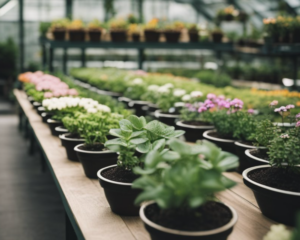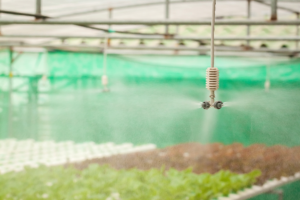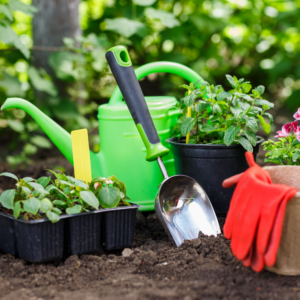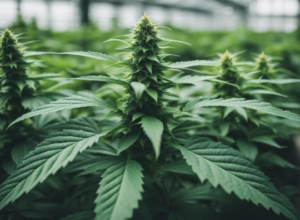Testing soil pH is a game-changer for your garden. It’s super easy, and you don’t need fancy tools to get started. By knowing the pH level of your soil, you can choose the right plants for your garden and help them grow better. Whether you’re growing vegetables, flowers, or herbs, this step is key.
I remember when I first tested my soil pH. I was amazed by how much it affected my garden’s growth. With a simple pH test kit, I found out that my soil was too acidic for some of my plants. After adjusting the pH, my plants started thriving like never before.
You’ll need to collect soil samples from different areas of your garden. Mixing them together gives you a good average reading. It’s like finding the right balance for a recipe. With just a bit of effort, you can make sure your plants get the nutrients they need.
Understanding Soil pH
Knowing about soil pH helps you grow healthy plants. Different plants need different pH levels, and the pH scale tells us if the soil is acidic, neutral, or alkaline.
What Is Soil pH?
Soil pH measures the acidity or alkalinity of soil. It shows how many hydrogen ions are in the soil. More hydrogen ions mean the soil is more acidic. Less hydrogen ions mean the soil is more alkaline.
Most plants do best in soil with a pH between 6 and 7. This range is mostly neutral but a little on the acidic side.
Importance of pH for Plant Health
Soil pH affects how well plants can take in nutrients. If the soil is too acidic or too alkaline, plants can’t absorb nutrients properly. This can lead to poor plant growth and low yields.
For example, blueberries like acidic soil, about pH 4.5 to 5.5. On the other hand, most vegetables like tomatoes and lettuce prefer neutral to slightly acidic soil, around pH 6 to 7.
The pH Scale Explained
The pH scale ranges from 0 to 14. A pH of 7 is neutral. Less than 7 is acidic, and more than 7 is alkaline.
A change of 1 unit means ten times more or less acidic or alkaline. For example, pH 5 is ten times more acidic than pH 6.
Using a pH test kit, you can easily find out your soil’s pH level and adjust it as needed to suit the plants you’re growing.
Preparing for a pH Test
To test soil pH accurately, you’ll need to prepare well. This involves collecting a proper soil sample and choosing the right time to test your soil.
Collecting a Soil Sample
First, I gather my tools: a clean trowel, a plastic bucket, and a soil testing kit. I remove any debris, like leaves or roots, from the soil surface. Then, I dig about 6 inches deep and collect small amounts of soil from different spots in my garden. This ensures I get a good mix that represents my soil type.
I combine all these samples in my bucket and mix them thoroughly to get a homogenous sample. If the soil is too wet, I let it dry out a bit. Wet soil can give inaccurate results. I make sure to remove any rocks or large organic matter from the sample before testing.
When to Test Your Soil
Timing is key! I usually test my soil in early spring or fall. The soil is more stable and not too dry or wet during these seasons, which helps get an accurate reading. Temperature can also affect my results, so I avoid testing in very hot or cold weather.
I test my soil pH before planting or adding fertilizers. This way, I know what adjustments I need to make to improve my garden’s health.
Testing Soil pH at Home
Checking soil pH at home can be pretty simple. You can use pH test strips, some common household items, or even a digital pH meter to get accurate readings.
Using pH Test Strips
pH test strips are easy to use and inexpensive. You just need to mix some soil with distilled water. Let it sit for about 15 minutes. Dip the pH test strip into the water-soil mixture. Compare the color change to the pH scale provided with the strips.
Steps:
- Mix soil and distilled water: Use a clean container.
- Wait: Let the mixture sit.
- Test: Dip the strip and read the results.
Pro tip: Make sure to use enough soil and water to get a good mixture.
Home Tests with Household Items
If you don’t have test strips, you can test soil pH with baking soda and vinegar. For this method, you’ll need two samples of soil.
- Baking Soda Test: Add soil to distilled water and then add some baking soda. If it bubbles, your soil is likely acidic.
- Vinegar Test: In another cup, add soil and distilled water, then add vinegar. If it fizzes, your soil is alkaline.
Baking soda reacts with acidic soil. Vinegar reacts with alkaline soil.
Keep in mind these tests are less accurate but can give you a general idea.
Digital pH Meters
Digital pH meters are more accurate and easy to use. They come with a probe you place directly into the soil. Some meters need calibration with a solution to ensure accuracy.
How to use:
- Calibration: Follow the device instructions.
- Insert the probe: Push it into the damp soil.
- Read the meter: The digital screen will show the pH level.
Advantages:
- Accurate: More precise results.
- Easy to Read: Clear display.
Tip: Keep your pH meter clean for accurate readings.
Each method has its pros and cons. Choose the one that’s best for your needs and budget.
Interpreting Test Results
Once you have your soil pH test results, the next step is to understand what they mean and how you might need to adjust your soil’s pH levels. This influences how well your plants grow, so it’s worth paying attention to.
What Your pH Level Means
Your soil pH will fall somewhere on a scale from 0 to 14. Numbers below 7 indicate acidity, while numbers above 7 indicate alkalinity. A pH of 7 is neutral.
Here’s what different pH levels might mean for your garden:
- Acidic (pH 3-6.9): Most vegetables do okay in slightly acidic soil, but some plants like blueberries prefer it more acidic.
- Neutral (pH 7): Most plants grow well in neutral soil.
- Alkaline (pH 7.1-14): Some plants, such as lavender and certain succulents, thrive in slightly alkaline soil.
Understanding your soil’s pH can help you select the right plants or amendments.
Adjusting pH Levels
If you need to change your soil’s pH, here are some tips:
- To increase pH (make more alkaline): I use lime or wood ash. Lime is available in several forms, like ground limestone or dolomitic lime. These materials help raise the pH over time.
- To decrease pH (make more acidic): Add elemental sulfur, aluminum sulfate, or organic materials like pine needles or peat moss. These elements work to lower the pH gradually.
It’s important to follow guidelines for the right amount of amendments. Over-adjusting can harm plants more than help them. Regular testing can tell you how well your adjustments are working.
Maintaining Soil pH
Maintaining the right pH level in your soil is crucial for healthy plants. It involves regular testing and using the right amendments.
Regular Monitoring and Adjusting
To keep soil pH balanced, you need to monitor it often. I use pH strips or a probe from a soil testing kit. These tools are easy to use and give you quick results.
Checking your lawn at different times of the year is a good habit. If the results show the soil is too acidic or alkaline, you need to take action. The pH might change due to rain, fertilizer, or plant material from my garden like peat moss and compost.
Once you know the pH level, adjust it by adding amendments. Doing this regularly ensures your soil stays healthy.
Choosing the Right Soil Amendments
Choosing the right amendments depends on whether the soil needs to be more acidic or more alkaline. For increasing acidity, I use organic options like peat moss or sulfur. They work well and are relatively safe.
If I need to reduce acidity and make the soil more alkaline, I opt for limestone. There are two types: calcitic and dolomitic limestone. Calcitic is good for calcium, while dolomitic also adds magnesium.
Sometimes, I mix in compost or use balanced fertilizer. These amendments not only adjust pH but also add nutrients. The key is to use the amendments correctly to avoid any harm to my plants.
By monitoring and using the right materials, I keep my lawn and garden soil healthy and at the right pH.
Specific pH Requirements for Plants
Knowing the right pH level for your plants can help them grow better and stay healthy. Different plants prefer different pH levels, so it’s important to match the soil pH to what each type of plant needs.
Vegetables and Fruits
Most vegetables and fruits do best in soil with a pH between 6.0 and 7.0. Tomatoes, for example, thrive in slightly acidic soil, usually around 6.2 to 6.8.
Blueberries prefer more acidic conditions, around 4.5 to 5.5. They won’t do well in soil that’s too neutral. If you’re growing a vegetable garden or fruit orchard, it’s useful to check the pH for each specific plant.
Flowers and Ornamental Plants
Many flowers and ornamental plants need just the right pH to show off their best colors and growth. Hydrangeas are interesting because their flower color changes with soil pH. They produce blue flowers in soil with a pH of 5.0 to 5.5, while pink flowers appear in more neutral pH levels.
Lavender likes alkaline soil with a pH of 7.0 to 8.0. It helps to test the soil pH before planting to ensure the best results.
Lawns and Landscape Plants
Grass in lawns generally prefers a pH of 6.0 to 7.0. If the soil is too acidic or too alkaline, the grass won’t grow very well.
Trees and shrubs used in landscaping also have specific pH requirements. For instance, most landscape plants do best in slightly acidic to neutral soil. If you’re planning your landscaping, keeping an eye on soil pH can keep your plants looking vibrant and healthy.
Frequently Asked Questions
Let’s go over some common questions about testing soil pH. These include methods without a test kit, using pH strips, and spotting signs of acidic soil.
Is there a simple way to test soil pH without a test kit?
Yes, you can use vinegar and baking soda. Take a soil sample, put a bit of soil in two different containers. Add vinegar to one container. If it fizzes, your soil is alkaline. Add water and baking soda to the other container. If it fizzes, your soil is acidic.
What steps should I follow to use pH strips for soil testing?
First, collect a soil sample and mix it with distilled water in a small container. Let it sit for 30 minutes. Dip the pH strip into the mixture and compare the color change to the chart on the strip packaging. This will tell you the pH level of your soil.
Can you recognize the signs that indicate my soil is too acidic?
Yes, there are some clear signs. Look for yellowing leaves or stunted growth in plants. You might also notice patches where grass refuses to grow. These can be indicators that your soil is too acidic.






